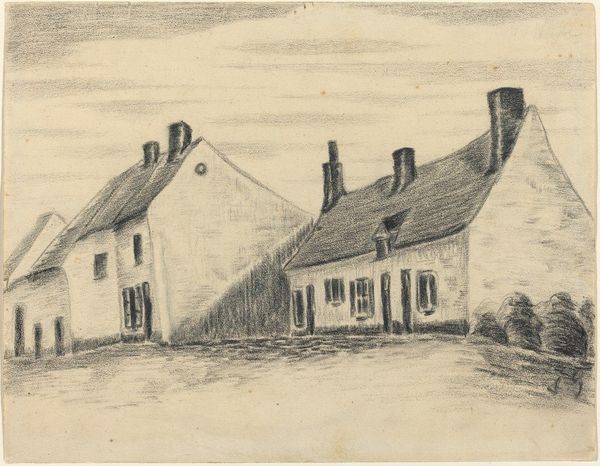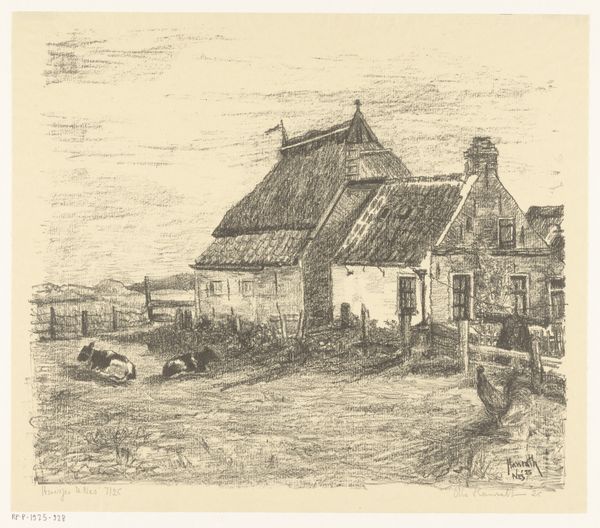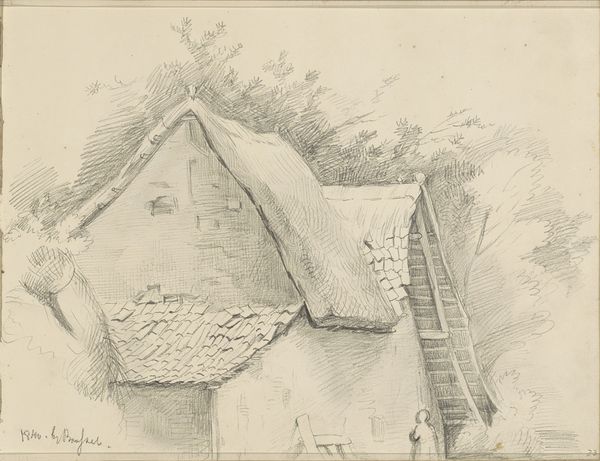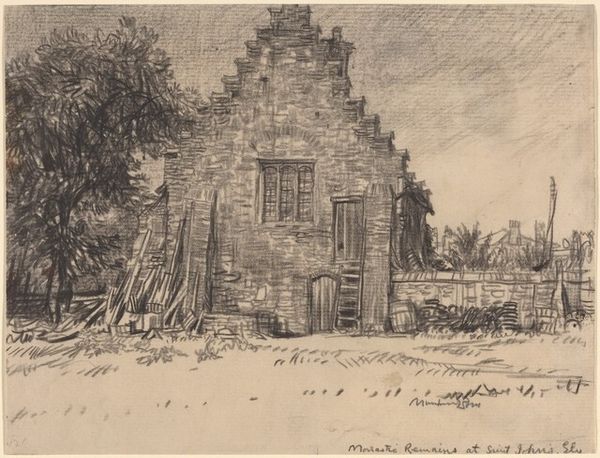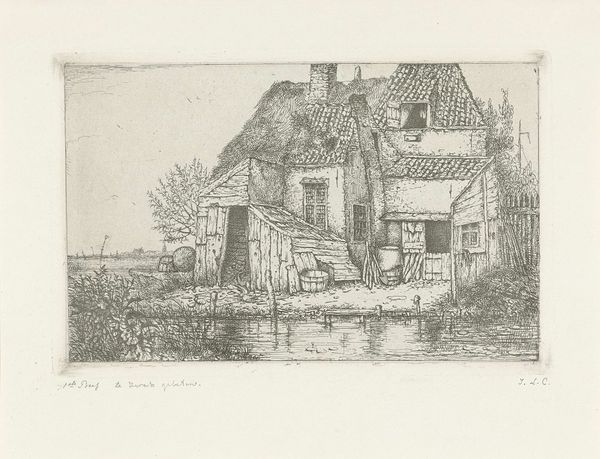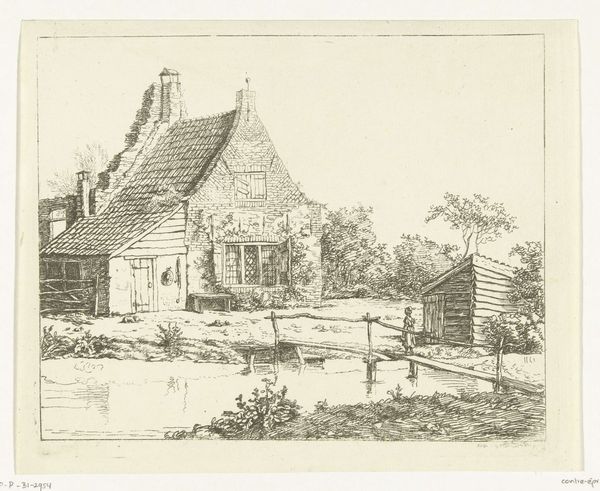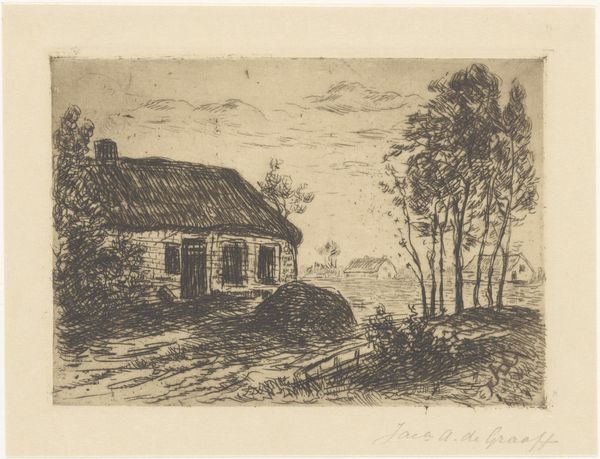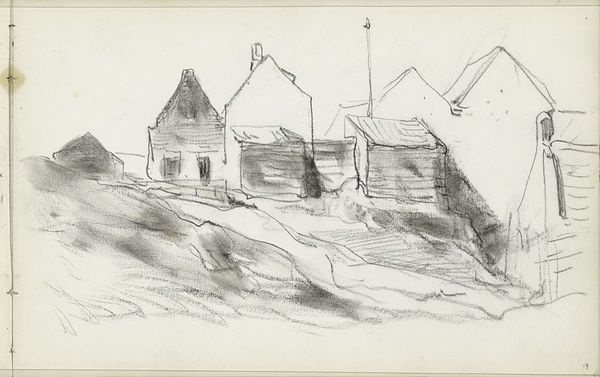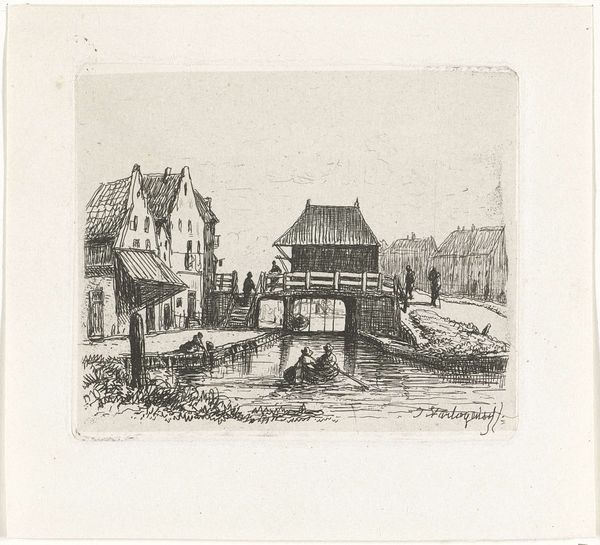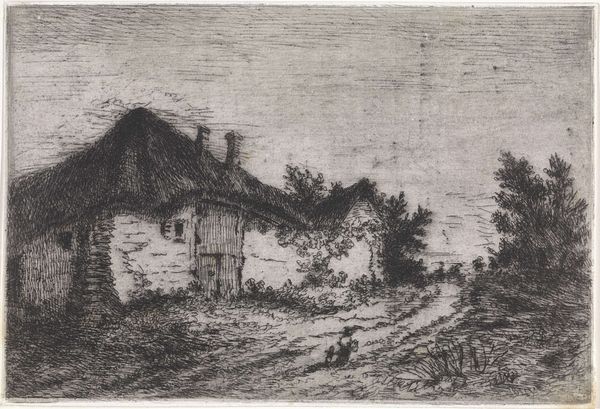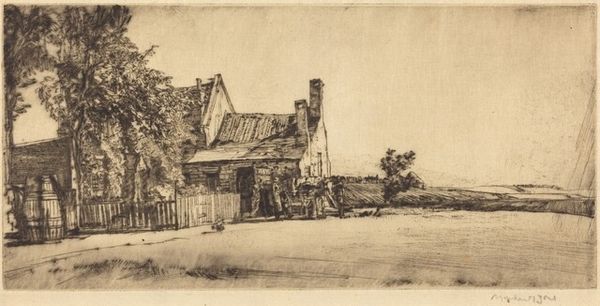
drawing, paper, pencil
#
pencil drawn
#
drawing
#
landscape
#
paper
#
pencil
#
northern-renaissance
#
realism
Copyright: Public Domain: Artvee
Curator: Van Gogh's "The Magrot House, Cuesmes," made around 1879 to 1880, is rendered in pencil on paper. It feels almost ghostlike. Editor: My first thought: loneliness. It's like the house is fading, merging back into the earth, the past. What do you make of that? Curator: Absolutely! You see how the texture seems to vibrate? It has an anxious energy. For Van Gogh, this house was home for a time; it's where he lived while working as a missionary. The humbleness of the setting is very evident here. Editor: And a place that marked his internal conflicts, clearly. His "failure" as an evangelist, his growing despair, his disconnect with the church. This drawing is a powerful document of that struggle, isn't it? The house almost feels weighed down. Curator: Exactly. Notice the detail in the thatched roof and shutters versus the almost hasty strokes around the building. This tension evokes the internal restlessness he was struggling with. The high contrast feels quite symbolic, almost prophetic of what was to come. Editor: It is such a stark contrast from what the world typically recognizes as "Van Gogh"—the explosive color and brushstrokes. But maybe that's the point. He's showing us the bleak reality underneath the vibrant surface of life. Curator: It's almost painful how much tenderness there is here in showing us that realism. It reflects that moment where a man starts realizing what his life will amount to. And isn't that terribly human? Editor: Yes, and the politics are woven in too, aren't they? The depiction of poverty, the simplicity. He lived amongst coal miners during that period, and that must have fueled this almost grim quality that you immediately see upon laying eyes on the artwork. It's a statement. Curator: Absolutely, the socio-political aspects here are palpable! You look at it and think, the hand of the artist wanted more, more than the state it was in. Editor: Right. And as a record of one's despair, of societal disparities—this work is terribly potent, perhaps even more so than the sunflower paintings everyone flocks to see. Curator: It does take some contemplation, which I find exciting! We can consider a simple piece like this and see something with depth. Editor: And feel something real. I like that very much.
Comments
No comments
Be the first to comment and join the conversation on the ultimate creative platform.
